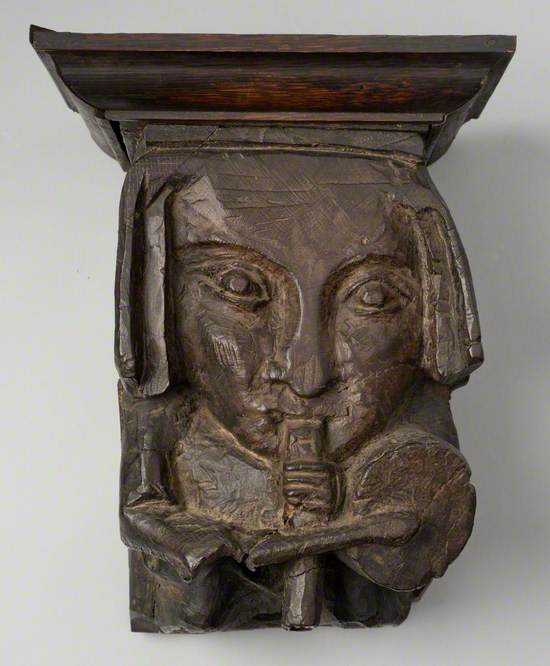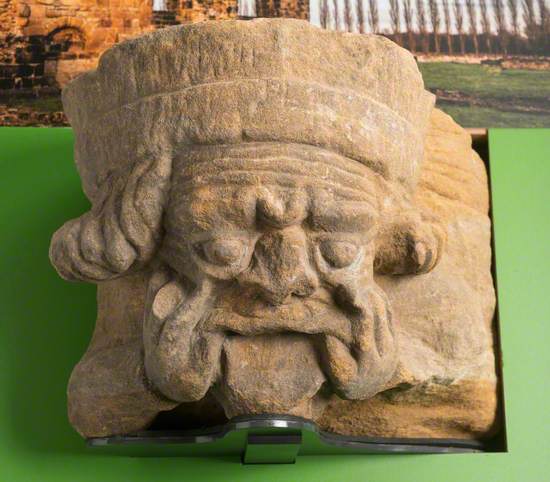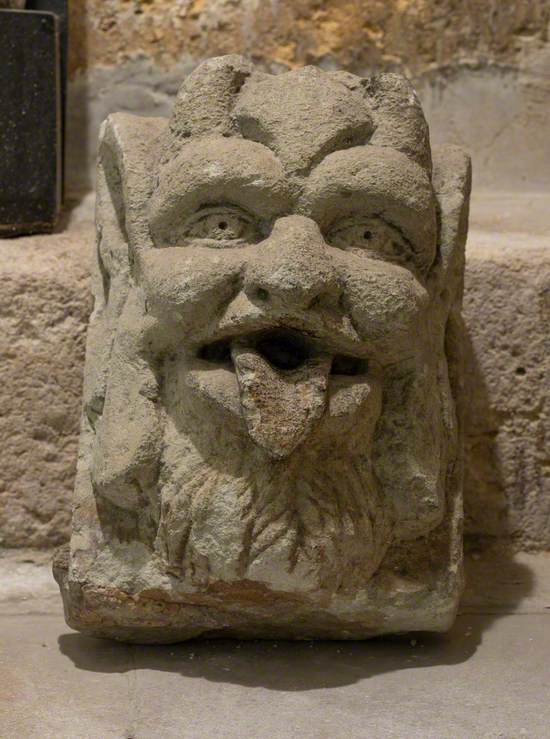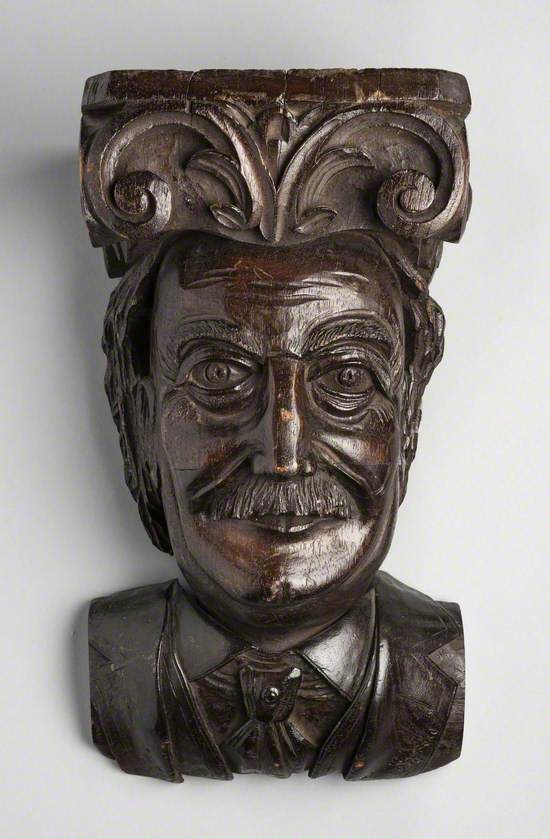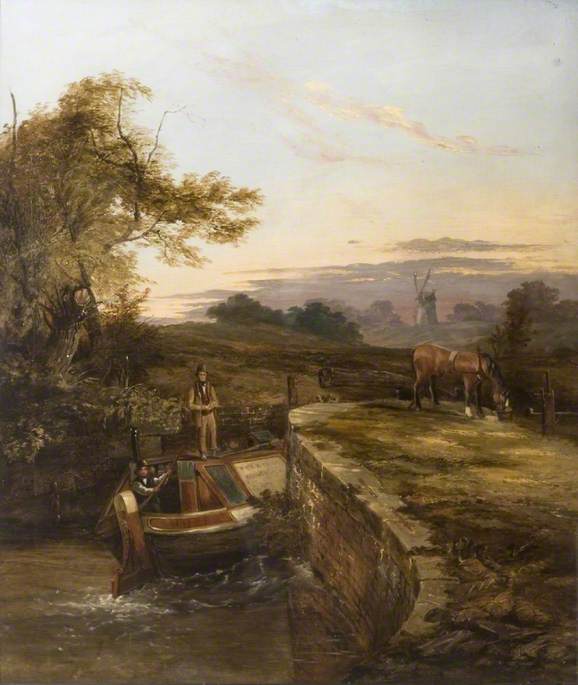Cor what? Corbels!... structural brackets used to support porches, door lintels and other jutting architectural features. But they can also be so much more than this. Medieval stonemasons and woodworkers often decorated corbels with figures and faces. The carvings are thought to have served various purposes, from keeping evil spirits at bay, inspiring worshippers and honouring VIPs – to simply making people laugh. Which of these corbel characters would you choose to watch over your home?
Striking the right note
There would never be a dull moment with this fellow hanging around!
Originally made for an unknown church, probably in the North Walsham area of Norfolk, he is now very much at home playing his flute and drum while propping up a mantelpiece in Cecil Sharp House, the home of the English Folk Dance and Song Society.
unknown artist
Wood
H 27.5 x W 21.2 x D 17.5 cm
English Folk Dance and Song Society
Making faces
Remember that thing grown-ups used to say when you were a kid and made a face – about the wind changing and your face staying the same forever?
This mischievous medieval corbel comes from Mount Bretton Priory in South Yorkshire. There are several theories about the origin of irreverent (and sometimes downright rude) carvings such as this one. Is this corbel character protecting the faithful by making faces to distract evil spirits? Is it instructional – warning monks and abbey visitors how NOT to behave? Is it a satirical or caricatural depiction of a real person? Or was it simply the stonemason having a bit of fun?!
unknown artist
Stone
H 280 x W 300 x D 390 cm
Experience Barnsley Museum and Discovery Centre
A kingly corbel
This beautiful king's head is thought to be from Lambeth Palace’s medieval Great Hall, where it watched over the Archbishop of Canterbury and his household and guests.
But this king wasn't able to protect the building from Cromwell's troops during the English Civil War. The Grand Hall was completely ransacked, including the building material and architectural details.
What the devil?!
This fifteenth century devil-like corbel is possibly from old St Thomas's Church in Newport on the Isle of Wight. Wild and fantasy beasts and grotesques can often be found on the exterior walls of medieval religious buildings. The thinking may have been that by depicting danger and evil, the building could be defended from enemies and bad spirits by beating them at their own game.
The leer of this beast looks a tad half-hearted – come on, give it some welly – you’re supposed to be scary! (Though there is something really creepy about those eyes...)
A symbol of support
Carved in 1920, and designed to be hung on a wall, artist William Culliford uses the tradition of corbels carved with faces for this portrait sculpture. Although never actually used to support any architectural features, it represents a man who offered huge support and hope to thousands.
David Lloyd George (1863–1945) was a Welsh statesman and reformer who served as MP for the Caernarvon Boroughs for 55 years and was Prime Minister of the United Kingdom from 1916 to 1922. While Chancellor of the Exchequer, under Asquith, he set in motion extensive welfare reforms through his People's Budget of 1909/1910, which helped establish the modern welfare state.
William Alex Culliford
Wood
H 38 x W 19.9 x D 18.2 cm
Amgueddfa Lloyd George Museum
